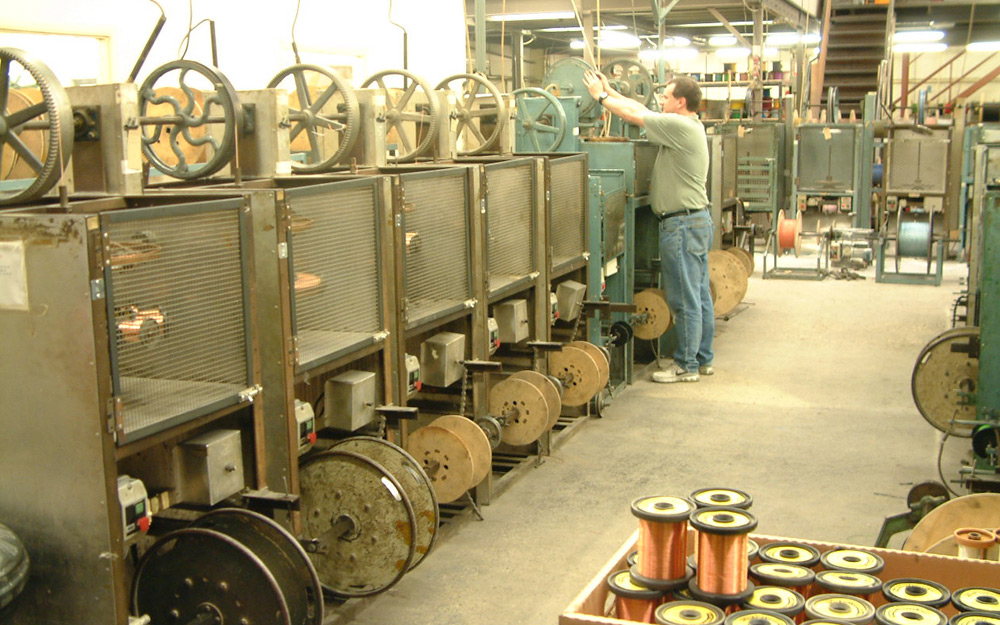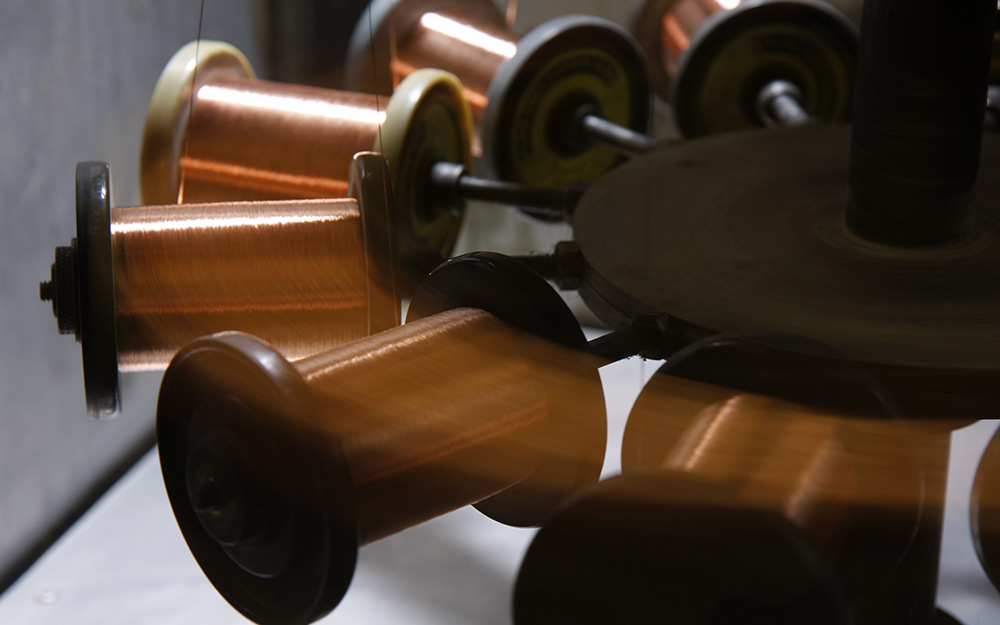Cable Screening
Screening of cable, cable components, or even individual cores, helps to minimize Electro-Magnetic Interference (EMI).
Screening can:
- Prevent outside EMI affecting the transmission of signals within the cable.
- Prevent EMI produced by currents within the cable interfering with sensitive equipment in the vicinity of the cable.
Kalestead offers many types and combinations of screen.
Conductive Tapes
Commonly accompanied by a drain wire for ease of termination, these tapes can be made from a conductive polymer or metalized plastic, the latter commonly having an aluminium or copper layer over a Polyester substrate.
Aluminium/Polyester tapes provide general EMI screening at low cost and have the advantage of giving 100% coverage without adding significantly to the size and weight of the cable. These tapes are particularly flexible but can lack the durability of wire screens so may not be ideal for continuous flexing applications.
Conductive Polymer Layer
Kalestead can offer an extruded conductive layer within a cable to provide flexibility with durability. This type of product is also used to prevent anti-static build up and can reduce “noise” (caused by electrical induction) within audio cables.
Spiral Screens
These consist of one or more layers of closely lapped wires (commonly plain or tinned copper) spirally wound over cables, individual cores or groups of cores. They provide for a very flexible cable with, typically, 85 – 95% coverage and can be offered in conjunction with a conductive tape or layer, to provide 100% coverage.

Braiding
There are numerous materials that can be used for braids in electrical cables. Their prime use in this section is for electrical screening. Materials used can be plain, enameled, tinned, silver-plated or nickel-plated copper, galvanized or stainless steel, or alloy wires. Braids are formed by weaving ( or plaiting) groups of wires around a core or group of cores or even over the exterior of a cable.
This is the most time consuming and expensive form of screening. It can also add significantly to the weight and size of a cable. However, it is probably the most effective form of screening over the frequency range of 1 kHz to 50MHz. Up to 95% coverage is possible and, when combined with a foil tape, provides 100% coverage over a wider frequency range. Kalestead also offers double braids to provide up to 98% screening coverage.
One of the most common materials for forming braided screens is tinned copper wire, having the added benefit of resistance to oxidation at a reasonable cost.
Braids have the advantage of maintaining coverage when the cable is flexed. They are flexible and durable but not suitable for tight bend radii. Braided screens have become essential in maintaining the integrity of digital transmissions. This has become ever more important with the increasingly widespread development and use of digital equipment. Whatever your requirements, Kalestead will be pleased to work with you to design the perfect cable to fit your application-however demanding that my be!


Whatever your requirements, Kalestead will be pleased to work with you to design the perfect cable to fit your application – however demanding that may be!
Contact us
If you have a project and require assistance, do not hesitate to contact us. A member of our team will be in touch.
